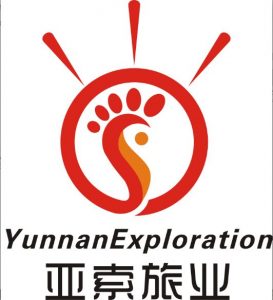
Christmas Day of Lisu Ethnic Minority in Nujiang
1. Religious Background and Cultural Integration
- Western Christmas: Originated from the Roman cult of Sol Invictus (Sun God) and was later adopted by Christianity to commemorate the birth of Jesus. Its core combines religious rituals (e.g., church masses) with family reunions, blending religiosity and secularity.
- Lisu Christmas: Introduced to the Nujiang region of Yunnan by Western missionaries in the early 20th century, it merged with traditional Lisu beliefs (e.g., nature worship, ancestor worship), forming a hybrid of “Christianity + ethnic culture.” For example, some Lisu believers link Jesus’ birth to their own creation myths, viewing him as a “bringer of light.”
2. Celebration Timing and Duration
- Western Christmas: Fixed on December 25, typically lasting 1–2 days, with some countries extending the “Christmas season” from November to January (e.g., the U.S.).
- Lisu Christmas: Observed on the same date as the Western holiday but with flexible celebrations. In Fugong County, for instance, preparations begin around December 23, with concentrated worship on the 25th, followed by traditional crossbow competitions and folk dances on the 26th. Some remote villages may celebrate until early January.
3. Rituals and Activities
(1) Religious Ceremonies
- Western: Services are conducted in Latin or local languages, emphasizing hymn-singing, prayer, and sermons. Nativity scenes (mangers) are displayed in homes.
- Lisu:
- Language: Services and hymns are performed in the Lisu language; translated hymnals incorporate ethnic musical elements.
- Attire: Believers wear traditional clothing—women don “E’le” hats (headpieces adorned with coral and seashells), while men carry knives and arrow bags, integrating ethnic symbols into religious rituals.
- Setting: Some villages build outdoor altars, combining fire pit culture (a symbol of Lisu daily life) with Christian prayers, reflecting the fusion of nature worship and Christianity.
(2) Traditional Practices
- Western: Focuses on family meals, gift exchanges, and Santa Claus parades, with strong commercialization (e.g., Christmas trees, lights, gifts).
- Lisu:
- Crossbow Shooting Competitions: Rooted in hunting traditions, young men showcase their skills; winners are honored as “warriors,” receiving prizes like homemade rice wine or 麻布 (hemp cloth).
- Singing and Dancing: Groups perform the “Achi Mugua” dance (imitating goat movements), accompanied by hulusi (gourd flute). Lyrics blend Christian teachings with daily life scenes.
- Cuisine: Traditional foods like roasted suckling pig, corn cakes, and chicken stewed with lacquer oil are served, paired with homemade rice wine, distinct from Western staples like turkey and pudding.
4. Social Functions and Cultural Significance
- Western Christmas:
- Family Bonding: Highlights intergenerational interaction, such as gifts from elders to children.
- Economic Driver: Drives global retail; U.S. Christmas season spending reached $886.7 billion in 2022.
- Lisu Christmas:
- Community Cohesion: Believers from remote villages gather across mountains, with pastors traveling to villages for sermons, strengthening ethnic identity.
- Cultural Inheritance: Traditional arts like dance and crossbow skills are integrated into the festival. For example, the “walking on knives and fire” performance evolved from a religious ritual into a sports competition.
5. Symbolic Symbols and Decorations
- Western:
- Christmas Tree: Originated in Germany, symbolizing eternal life.
- Santa Claus: Derived from Dutch legends, representing generosity and blessings.
- Lisu:
- Crossbows: As traditional hunting tools, they are hung in churches or homes, symbolizing “guarding the faith.”
- Natural Elements: Churches are decorated with pine branches and mountain flowers, echoing the Lisu belief in “animism.”
- Ethnic Attire: The “E’le” hat, with its shining coral and seashells, symbolizes “the arrival of light.”
6. Commercialization Level
- Western: Highly commercialized, with a global market size of $2.5 trillion in 2022; brands launch limited-edition products (e.g., Starbucks Christmas cups).
- Lisu: Maintains traditional roots, with minimal commercialization—only handicrafts like hemp bags and crossbow models are sold, without large-scale consumer culture.
Conclusion: Cultural Adaptation and Innovation
Lisu Christmas is a classic example of “indigenization of foreign religion”:
- Linguistic Transformation: Translating the Bible and creating hymns in Lisu.
- Ritual Integration: Incorporating traditional activities like crossbow competitions and folk dances into the festival.
- Symbolic Reconstruction: endowing ethnic symbols like crossbows and fire pits with new religious meanings.
This “creative adaptation” preserves Lisu cultural identity while providing a unique model for Christian dissemination in ethnic minority areas. In contrast, Western Christmas prioritizes commerce and family, with religiosity yielding to secularization. The differences ultimately reflect the collision between “cultural heritage” and “globalized consumption.”


 7 Days GolfingTour
7 Days GolfingTour
 8 Days Group Tour
8 Days Group Tour
 8 Days Yunnan Tour
8 Days Yunnan Tour
 7 Days Shangri La Hiking
7 Days Shangri La Hiking
 11 Days Yunnan Tour
11 Days Yunnan Tour
 6 Days Yuanyang Terraces
6 Days Yuanyang Terraces
 11 Days Yunnan Tour
11 Days Yunnan Tour
 8 Days South Yunnan
8 Days South Yunnan
 7 Days Tea Tour
7 Days Tea Tour
 8 Days Muslim Tour
8 Days Muslim Tour
 12 Days Self-Driving
12 Days Self-Driving
 4 Days Haba Climbing
4 Days Haba Climbing
 Tiger Leaping Gorge
Tiger Leaping Gorge
 Stone Forest
Stone Forest
 Yunnan-Tibet
Yunnan-Tibet
 Hani Rice Terraces
Hani Rice Terraces
 Kunming
Kunming
 Lijiang
Lijiang
 Shangri-la
Shangri-la
 Dali
Dali
 XishuangBanna
XishuangBanna
 Honghe
Honghe
 Kunming
Kunming
 Lijiang
Lijiang
 Shangri-la
Shangri-la
 Yuanyang Rice Terraces
Yuanyang Rice Terraces
 Nujiang
Nujiang
 XishuangBanna
XishuangBanna
 Spring City Golf
Spring City Golf
 Snow Mountain Golf
Snow Mountain Golf
 Stone Mountain Golf
Stone Mountain Golf



